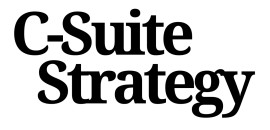
Understanding the value of frontline strategies
Why Frontline Perspectives Matter in Strategy
In today’s dynamic business environment, the value of frontline strategies is more apparent than ever. The frontline—where jobs, services, and client interactions happen—serves as the pulse of an organization. These teams are not only executing campaigns and delivering services, but also gathering real-time insights that can shape executive decision-making. Their proximity to clients, public sentiment, and earned media trends gives them a unique vantage point that traditional top-down approaches often miss.
Frontline employees, whether in public relations, digital advertising, or public affairs, are the first to spot shifts in media narratives, political climates, and client expectations. Their daily work provides a steady stream of actionable intelligence, which, when harnessed, can inform strategies that are both agile and relevant. For executives and strategists, tapping into this resource means bridging the gap between leadership and those closest to the market.
- Frontline teams detect changes in public opinion and media coverage before they reach the boardroom.
- They understand the nuances of client relations and campaign performance in real time.
- They are often the first to identify opportunities for new services or digital solutions.
By integrating frontline insights into the strategic process, companies can enhance their agility and responsiveness. This approach not only improves communications and relations with clients, but also strengthens the organization’s ability to adapt to evolving market conditions. For leaders seeking to future-proof their strategies, leveraging frontline perspectives is no longer optional—it’s essential.
For executives interested in deepening their strategic vision and fostering a culture of collaboration, exploring executive workshops can be a practical next step. These sessions can help bridge the divide between the C-suite and frontline teams, ensuring that every voice contributes to the company’s long-term success.
Bridging the gap between leadership and the front line
Closing the Distance Between Decision-Makers and the Frontline
In today’s fast-moving business environment, the gap between executive leadership and frontline teams can hinder strategic agility. Many organizations still operate with a top-down approach, where decisions are made at the highest level and passed down to those executing the work. However, the reality is that frontline employees—those closest to clients, campaigns, and public interactions—hold valuable insights that can shape more effective strategies. Bridging this gap requires intentional effort. Executives must move beyond traditional communications and create channels that foster two-way dialogue. This is especially important in sectors like digital media, public relations, and public affairs, where frontline teams interact daily with clients and the public, gathering real-time feedback on services, advertising campaigns, and earned media performance.- Encourage regular project debriefs that include both strategists and frontline staff, ensuring lessons learned are shared across the team.
- Leverage digital tools to collect and analyze frontline feedback, making it accessible to vice presidents and senior leaders.
- Integrate frontline perspectives into strategic planning sessions, especially when developing new services or launching political campaigns.
Empowering frontline employees for strategic agility
Building a Culture of Strategic Empowerment
Empowering frontline employees is not just about giving them more tasks. It’s about equipping them with the digital tools, trust, and autonomy to influence company strategies. In today’s fast-paced environment, frontline teams are often the first to spot shifts in public sentiment, media narratives, or client needs. When these insights are harnessed, they can drive real-time adjustments in campaigns, services, and communications.
- Access to digital resources: Providing frontline staff with up-to-date digital platforms and earned media monitoring tools enables them to gather and share actionable data from their daily work. This supports more agile project management and campaign execution.
- Clear communication channels: Establishing direct lines between frontline employees and the executive team ensures that valuable feedback on public affairs, advertising, and client relations is not lost in translation. Open communication also builds trust and encourages proactive problem-solving.
- Strategist-led training: Regular training sessions led by experienced strategists or vice presidents in public relations and communications help frontline teams understand the broader company strategy. This alignment boosts confidence and fosters a sense of ownership over campaign outcomes.
Companies that empower their frontline are better positioned to adapt to political and market changes. For example, when a frontline team identifies a shift in public opinion during a campaign, they can quickly relay this to leadership, allowing for rapid strategy adjustments. This agility is essential for maintaining relevance in today’s media and public relations landscape.
For C-suite leaders, the challenge is to create an environment where frontline strategies are valued and integrated into executive decision-making. This means investing in digital infrastructure, prioritizing transparent communications, and recognizing the strategic role of every job on the front line. For a deeper dive into how strategic empowerment can reshape your company’s competitive edge, explore this strategic insights for the c-suite resource.
Turning frontline feedback into actionable insights
From Feedback to Forward Motion
Frontline teams interact daily with clients, manage campaigns, and deliver services that shape public perceptions. Their insights are grounded in real-world experience, making them invaluable for refining company strategies. Yet, many organizations still struggle to turn this feedback into actionable steps that drive results.Practical Steps for Actionable Insights
- Establish clear communication channels: Encourage regular, structured feedback from frontline employees involved in jobs such as public relations, digital advertising, and earned media. This could be through digital platforms or scheduled team sessions.
- Integrate feedback into strategic planning: Use frontline observations to inform project adjustments, campaign tactics, and client service improvements. For example, if a strategist notices a shift in public sentiment during a political campaign, leadership can adapt messaging or media strategies accordingly.
- Leverage data and technology: Digital tools can help organize and analyze frontline feedback, making it easier to spot trends and opportunities. This is especially relevant today, as rapid changes in media and communications require agile responses.
- Empower cross-functional teams: Involve frontline employees in strategy sessions with vice presidents and other executives. Their perspective can bridge the gap between high-level vision and on-the-ground realities.
Building a Culture of Responsiveness
When frontline feedback is valued and acted upon, it fosters a culture where teams feel their work matters. This not only improves morale but also enhances the company’s ability to respond to shifts in public affairs, client needs, and campaign performance. Ultimately, integrating frontline strategies into executive decision-making is not just about listening—it’s about creating a continuous loop where insights drive meaningful change.Overcoming barriers to frontline engagement
Common Obstacles in Engaging the Frontline
Even as companies recognize the value of frontline strategies, many encounter persistent barriers that limit true engagement. These challenges often stem from traditional hierarchies, digital disconnects, and the rapid pace of change in today’s work environment. Understanding these obstacles is the first step toward unlocking the full potential of frontline teams in shaping executive decision-making.
- Hierarchical Silos: Rigid structures can prevent frontline employees from sharing valuable insights with leadership. This disconnect can stifle innovation and slow down the flow of information needed for effective strategies.
- Digital Overload: While digital tools are essential for communications and project management, too many platforms or poorly integrated systems can overwhelm teams. This makes it harder for frontline voices to be heard and for executives to access actionable feedback.
- Misaligned Incentives: When frontline jobs are measured by short-term metrics, employees may not feel empowered to contribute to broader strategic goals. Aligning incentives with company-wide objectives is crucial for fostering engagement.
- Unclear Communications: Without clear, consistent messaging from leadership, frontline teams may not understand how their input influences campaigns, services, or public relations efforts. This can lead to disengagement and missed opportunities for earned media or public affairs impact.
- Resource Constraints: Limited time, training, or support can make it difficult for frontline employees to participate in strategic initiatives, especially when balancing client demands and project deadlines.
Practical Steps to Break Down Barriers
To overcome these challenges, executive teams should prioritize:
- Streamlining digital platforms to ensure frontline feedback is easily captured and shared with strategists and vice presidents.
- Establishing regular, two-way communications channels that connect frontline teams with leadership, fostering transparency and trust.
- Aligning performance metrics with strategic objectives, so frontline contributions to campaigns and public relations are recognized and rewarded.
- Investing in training and resources that empower employees to engage in strategic projects and client services.
By addressing these barriers, organizations can create a culture where frontline strategies drive real impact, supporting both executive decision-making and long-term company performance in the competitive landscape of media, advertising, and public affairs.
Measuring the impact of frontline strategies on company performance
Key Metrics for Assessing Frontline Strategy Impact
For executive teams, measuring the impact of frontline strategies is not just about tracking activity—it’s about understanding how these efforts drive real business outcomes. The most effective organizations use a blend of quantitative and qualitative metrics to evaluate how frontline engagement shapes company performance, client satisfaction, and public perception.
- Operational Efficiency: Monitor improvements in workflow, project delivery times, and service quality. These metrics reveal how frontline input streamlines jobs and enhances team collaboration.
- Client and Public Relations Outcomes: Track changes in client retention, earned media coverage, and public affairs results. Positive shifts often signal that frontline strategies are resonating with clients and the broader public.
- Employee Engagement and Agility: Use surveys and digital feedback tools to gauge frontline sentiment. High engagement levels typically correlate with more agile responses to market changes and campaign demands.
- Campaign Performance: Analyze the effectiveness of advertising and communications campaigns influenced by frontline insights. Metrics such as reach, conversion, and media impact provide a clear view of strategic value.
Integrating Data for Strategic Decisions
To ensure credibility and authority, executives should integrate data from frontline strategies with broader business intelligence. This approach helps identify patterns, anticipate challenges, and refine services. For example, combining frontline feedback with digital analytics can uncover gaps in public relations or highlight opportunities for new client services.
Continuous Improvement and Accountability
Measuring impact is an ongoing process. Regular reviews of frontline strategy outcomes—whether in political campaigns, public communications, or client projects—enable leadership to adjust tactics and allocate resources more effectively. Transparent reporting fosters trust across the organization, from the strategist to the vice president and president levels.
Ultimately, the value of frontline strategies is realized when their impact is visible in business growth, stronger media presence, and improved client relations. By embedding measurement into the executive decision-making process, companies can ensure their frontline teams are not just heard, but truly drive transformation in today’s dynamic environment.














